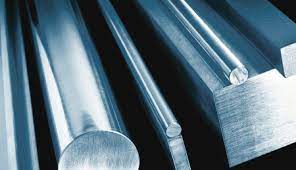In the realm of metallurgy and material science, the choice of steel alloy can profoundly impact the performance, durability, and cost-effectiveness of a wide range of applications. Among the myriad steel alloys available, tool steel stands out as a versatile and specialized option. In this extensive guide, we will delve into the intricate details of how tool steel compares to other steel alloys, analyzing their properties, applications, and the critical factors to consider when choosing the right material for your specific needs.
1. Introduction
Steel alloys are the backbone of modern industry, finding applications in everything from construction to manufacturing, automotive to aerospace. While there are numerous steel alloys to choose from, tool steel occupies a unique niche. This article will explore the key distinctions between tool steel and other common steel alloys, shedding light on their respective strengths, weaknesses, and best-fit scenarios.
2. Tool Steel: Unveiling the Specialized Alloy
 2.1. What is Tool Steel?
2.1. What is Tool Steel?
Tool steel is a specialized alloy designed primarily for the production of cutting tools, molds, and dies. It is engineered to excel in hardness, toughness, and resistance to wear, making it indispensable in applications where precision and durability are paramount.
2.2. Key Properties of Tool Steel
2.2.1. Hardness
Tool steel is renowned for its exceptional hardness, derived from its high carbon content. This property allows tool steel to maintain a sharp edge, even under extreme conditions.
2.2.2. Toughness
In addition to hardness, tool steel possesses remarkable toughness, enabling it to withstand heavy mechanical stresses without fracturing.
2.2.3. Wear Resistance
Outstanding wear resistance ensures that tool steel retains its cutting edge and effectiveness, even when confronted with abrasive materials.
2.2.4. Corrosion Resistance
Certain tool steel varieties are alloyed with elements like chromium or nickel to enhance their corrosion resistance, broadening their utility.
2.2.5. Temperature Resistance
Tool steel maintains its properties across a wide temperature range, making it suitable for applications that involve extreme heat or cold.
3. Common Steel Alloys: A Comparative Analysis
3.1. Carbon Steel
Carbon steel, a ubiquitous alloy, is prized for its affordability and ease of manufacturing. However, it lacks the specialized properties of tool steel, making it less suitable for precision cutting and molding applications.
3.2. Stainless Steel
Stainless steel is renowned for its corrosion resistance due to its chromium content. While it excels in this aspect, it generally falls short in terms of hardness and wear resistance when compared to tool steel.
3.3. Alloy Steel
Alloy steel is a versatile category encompassing various steel alloys, including tool steel. While it shares some characteristics with tool steel, not all alloy steel possesses the same level of hardness and toughness.
3.4. High-Speed Steel (HSS)
High-speed steel is a subset of tool steel designed for applications requiring exceptional cutting speeds. It maintains hardness and wear resistance even at elevated temperatures, making it suitable for machining operations.
3.5. Tool Steel vs. Other Steel Alloys: A Summary
To summarize, tool steel distinguishes itself through its unique combination of hardness, toughness, and wear resistance, making it the top choice for precision tools and molds. While other steel alloys have their merits, they often lack one or more of these critical properties.
4. Applications: Where Each Shines
 4.1. Tool Steel Applications
4.1. Tool Steel Applications
Tool steel finds its forte in the production of cutting tools (drills, saw blades), molds for plastic and metal shaping, and dies for stamping and forging. Its unparalleled hardness and wear resistance make it indispensable in these domains.
4.2. Common Steel Alloy Applications
Common steel alloys like carbon steel and stainless steel have a wide range of applications, including construction, structural components, and kitchen utensils. They excel in scenarios where extreme hardness or wear resistance is not the primary concern.
4.3. High-Speed Steel (HSS) Applications
High-speed steel is specifically engineered for applications requiring rapid machining. It is commonly used in the production of drill bits, taps, and cutting tools for high-speed milling and turning.
5. Choosing the Right Steel Alloy: Factors to Consider
Selecting the appropriate steel alloy hinges on several factors, including the intended application, budget constraints, and specific performance requirements. Tool steel shines in precision and durability but may be overkill for less demanding applications.
6. FAQs
6.1. Can tool steel be used for everyday applications?
While tool steel is exceptionally durable and versatile, its high cost and specialized properties may make it impractical for everyday, non-specialized uses.
6.2. Is stainless steel a suitable alternative to tool steel for cutting tools?
Stainless steel’s corrosion resistance makes it an attractive option for some cutting tools, but it may not match the cutting efficiency and longevity of tool steel.
6.3. What are some common maintenance practices for tool steel?
Maintaining tool steel tools involves regular sharpening, cleaning, and, if necessary, heat treatment to restore their properties.
6.4. Are there any environmentally friendly alternatives to tool steel?
Emerging materials, such as advanced ceramics and composites, are being explored as eco-friendly alternatives to traditional steel alloys like tool steel. However, their adoption is still evolving.
7. Conclusion
In the world of steel alloys, each variety has its unique strengths and weaknesses. Tool steel’s exceptional hardness, toughness, and wear resistance make it an indispensable choice for precision cutting and molding applications. While other steel alloys have their merits, they often fall short in one or more of these crucial properties, underscoring the importance of selecting the right material for the job at hand. By understanding the nuances of each steel alloy, you can make informed choices that optimize performance and efficiency in your specific applications.
